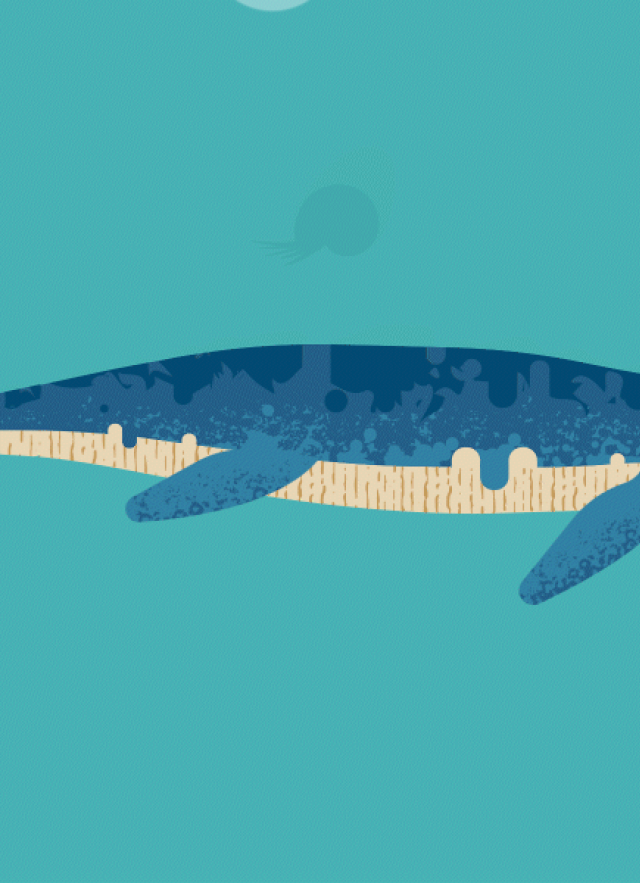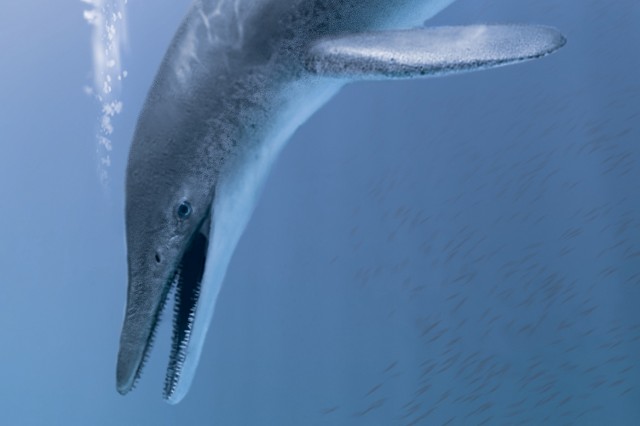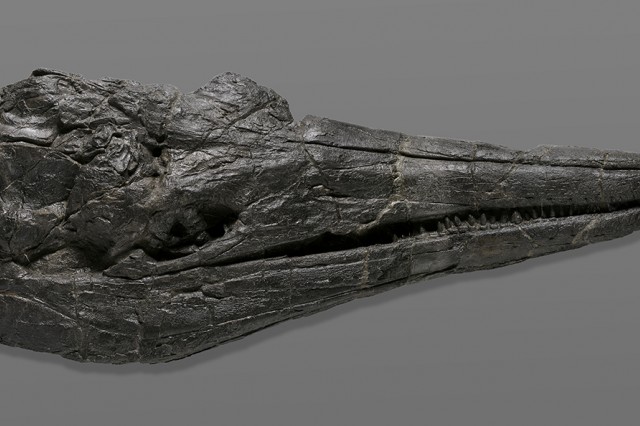Before Dinosaurs Got Big
Meet Earth’s first giant—a humongous new species of ichthyosaur—only at NHM!

About 240 million years ago, Las Vegas was at the bottom of an ocean.
The creatures of that ancient ocean are long gone, but the fossils of extinct animals like the mysterious shelled ammonites and ichthyosaurs—marine reptiles that looked like a cross between dolphins and lizards—tell the story of life in those Triassic seas in the mountains of modern-day Nevada.
Dinosaurs were just getting started, but something giant was already stalking the waters.
With a head the size of a grand piano, Cymbospondylus Youngorum was the earliest creature in the history of Earth to reach giant-sized proportions.
Its elongated snout suggests that it likely dined on squid and fish, but its huge size meant that it could have hunted smaller ichthyosaurs too. To get this massive, C. youngorum had to have huge amounts of food. Recreating that ancient environment virtually through sophisticated computational modeling, the paleontology team behind this discovery found that the ancient food web could support more than one huge, meat-eating marine reptile – there are more giants waiting to be discovered.
Both whales and ichthyosaurs evolved after mass extinctions to grow into giants of the oceans, but C. Youngorum reached giant size much faster than their whale counterparts
So how did ichthyosaurs get big so much faster than whales? A boom in their prey –animals like ammonites and the jawless eel-like conodonts– helped ichthyosaurs balloon in size earlier than whales. Researchers found a connection between great size and raptorial hunting –think of a sperm whale diving down to hunt giant squid. They also found that losing teeth led to larger sizes too –think of filter-feeding whales, the largest animals to ever live on Earth.

